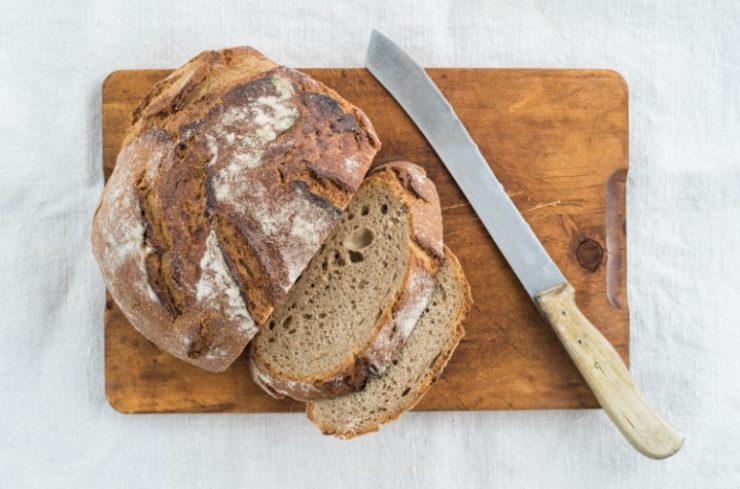Sourdough bread is a seemingly simple food. After all, it’s made from only three ingredients; flour, water, and salt. But once baked, it becomes a magical and complex food.
We fuss and finesse our recipes, keep baking journals and obsess over water temperatures and moisture. But, all that hard work and those delicious flavors and textures can go out the window if you don’t know how to store your bread.
Luckily, by following a few simple rules and doing a tiny bit of planning, your sourdough will last longer and you’ll end up with less stale, wasted bread.
In This Article
But First, Let The Bread Rest
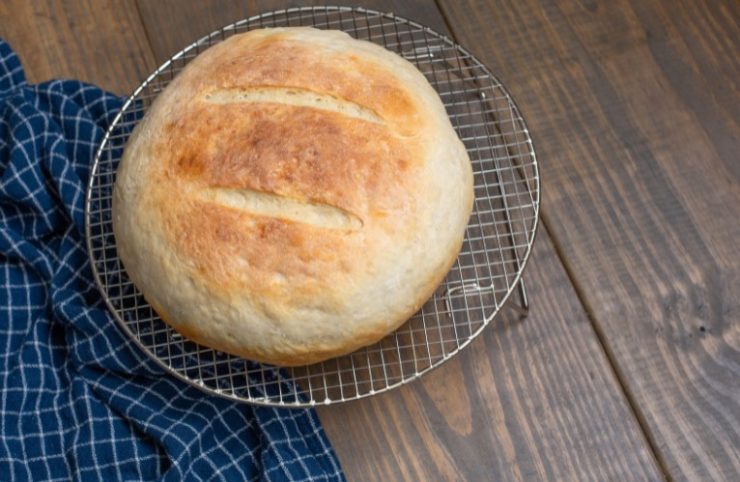
We’ll get into the best ways to store sourdough in just a second.
Before that, there’s one crucial step that you should always remember. Sourdough needs ample time to rest and cool before cutting, eating, or storing.
As soon as your sourdough comes out of the oven, it’s hard to resist the urge to cut into it right away. The smell of fresh bread is intoxicating, and there’s no doubt you want to see the bread’s structure and crumb. Not to mention taste that crispy, chewy crust.
But, even after it leaves the oven, your sourdough bread is not really finished cooking. And if you can show a little restraint now, your patience will be rewarded.
Before you cut into a fresh loaf, you should let it rest for at least an hour after it comes out of the oven, but 2 hours is even better. Ideally, this should be done on a resting rack that allows air to circulate around the whole loaf.
This resting and cooling period allows the interior to set and release excess moisture. If you were to cut into the loaf before it was properly cooled, you’re likely to find a very sticky interior and it can cause the loaf to dry and stale faster.
This resting period is also necessary before you wrap the bread or store it in any type of container. This will end up trapping too much moisture and can lead to a soggy crust and dense interior.
Ok, so now that your sourdough is properly cooled, we’re ready to cut into it, eat it, or store it for later.
The 3 Best Ways To Store Sourdough Bread
1. Unwrapped At Room Temperature
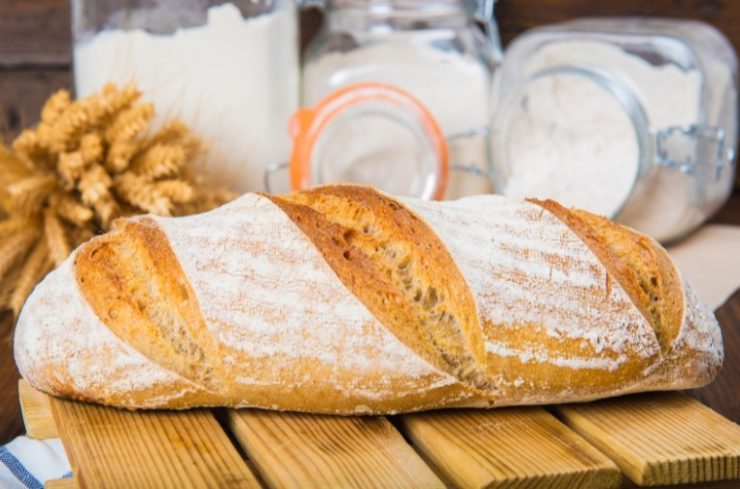
In most cases, the best time to eat your sourdough is the day that it was baked. And that’s also when storage is the easiest.
Generally, for the first 24 hours after your bread comes out of the oven, it can simply be left unwrapped on your countertop at room temperature. This will keep the crust nice and crisp and also allow the loaf to completely cool.
Whole loaves will keep the best this way. And once you cut into it, simply keep the cut side down on a plate or cutting board. But still uncovered, at room temp. This protects the cut portion, which is the most susceptible to drying out.
If you don’t eat your bread within the first day, or you sliced it all for toast or sandwiches, you’ll want to move on to one of the next options.
2. Wrapped At Room Temperature
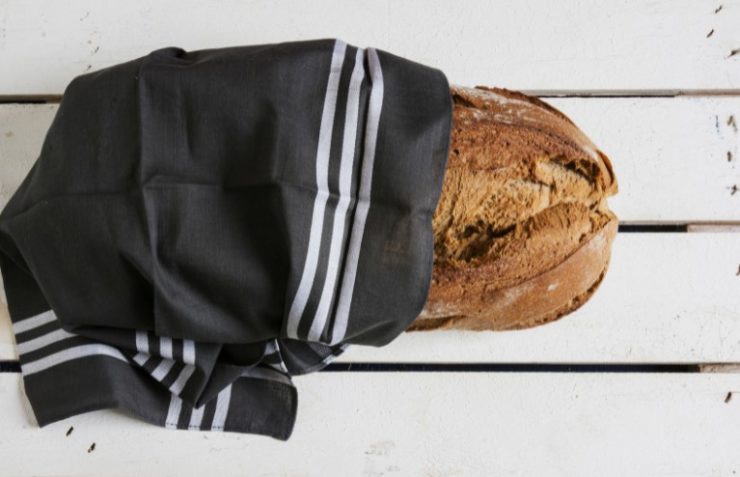
If some or all of your bread survives an entire day without being eaten, it’s time to think about protecting it from becoming overly dry. Although, if you still have an entire uncut loaf, you may be able to get away with another day uncovered on the counter.
At this stage, there are a few different options for the next step of your bread storage journey.
Large pieces of bread, say half and quarter loaves, can fair pretty well in a breathable covering for another day or two. That means something like a kitchen towel, paper bag, or a bread box.
Now, this will also depend partly on the climate where you live.
Unfortunately, it gets incredibly dry where I live, with humidity often hovering in the single digits. So if my bread makes it to day-2, I go straight to plastic wrap or a zip-top bag.
This is the best way to keep your bread soft and moist, but you will quickly lose the crispness of your crust. For me, that’s the only option unless I want to end up with one giant crouton.
Once you go down the road of using a plastic wrap or bag, you will lose some exterior texture. Fortunately, you can always partially revive your loaf in a hot oven. And, with this method, you can easily keep eating your bread for 5 days or even a week.
3. In The Freezer
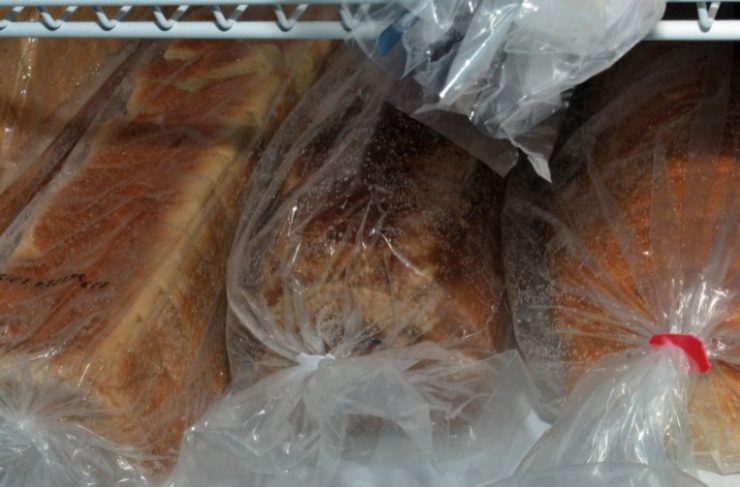
If you know that you won’t be eating your sourdough within a few days, your best bet is to freeze it. And the sooner you do it, the better, so long as it’s had time to completely cool first.
Freezing your bread all but stops the staling process (called starch retrogradation), and allows you to have bread that’s almost as good as fresh baked. Plus, you can do this with whole or sliced loaves for even more convenience.
Freezing Whole Loaves
To freeze whole or half loaves, allow them to fully cool and then wrap tightly in plastic wrap.
Then, place the wrapped loaf in a zip-top bag in the freezer. If you don’t have a large enough bag, an extra layer of plastic wrap will suffice.
When you’re ready to eat it, keep the loaf wrapped and allow it to thaw for a few hours at room temperature. Then, you can pop the whole thing in a hot oven for 10 minutes or so. Or use it however you would a fresh loaf.
Freezing Slices
To do this, simply slice your cooled bread and place the slices in a freezer bag. Now, you can take what you need when you need it, for the best toast or sandwich bread at all times.
If you want to save space by neatly stacking the slices, you can take the extra step of placing a piece of parchment between each slice to keep them from sticking together.
The Easiest Way To Eliminate Stale Bread
The fresher the bread the better, and there are a couple of things you can do to minimize unused leftovers and ensure you’re always eating the best and freshest bread possible.
Plan Ahead

For one, it’s great to have a plan for what you’ll be using the bread for or eating it with before you even start your bake. And to take that one step further, have a plan for what you’ll use any leftovers for.
For example, bread and butter to go with soup on day one. Sandwiches on day two. And french toast for day three.
And if planning is less your style, maybe keep a few stale bread ideas in your back pocket just in case. Things like bread pudding, croutons, or breakfast casseroles are just a few considerations.
When all else fails, make bread crumbs – something a bread baker should never have to buy from the store.
Bake More Often
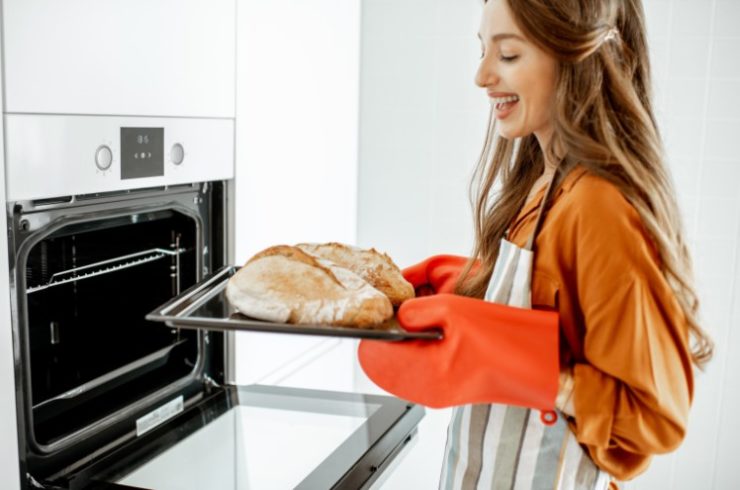
While I’ve just outlined the best ways to store sourdough, it’s really never better than the day it’s baked. And if you’re not baking for a crowd, it can be difficult to go through an entire loaf before it goes stale.
So, another great way to end up with minimal leftovers and waste is to do smaller bakes. And using something like a countertop convection oven can make the process incredibly quick and easy.
Frequently Asked Questions
How Long Does Sourdough Bread Stay Fresh?
Sourdough bread is usually at its very best the day it is baked, but it will last for 5 to 7 days when stored properly at room temperature.
What Is The Best Way To Store Sourdough Bread?
Fresh sourdough should be stored uncovered or loosely covered at room temperature for the first 1 to 2 days. After that, it should be placed in a bread box, wrapped in plastic, or frozen.
What Can I Do With Sourdough Bread That Is Going Stale?
Sourdough that is going stale can be refreshed in the oven, or used for things like french toast, bread pudding, croutons, or bread crumbs.
